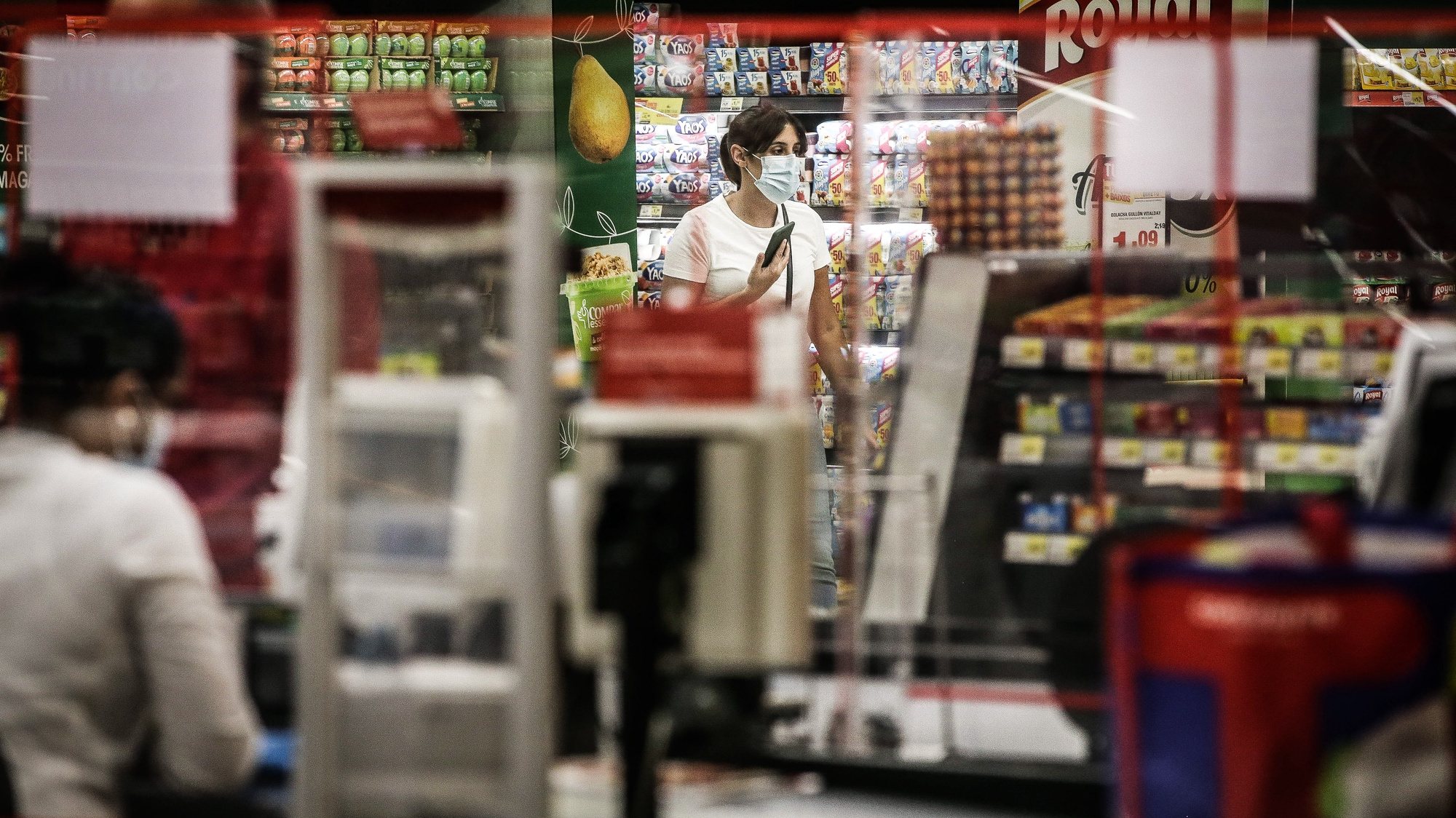In August, the Consumer Price Index (CPI) registered a value 6.3% higher than that of February, the month in which Russia invaded Ukraine, with emphasis on the rise in “food products”, which contributed 40% to the overall variation.
According to an analysis of the evolution of consumer prices since February 2022, released this Monday by the National Institute of Statistics (INE), “since the start of the war in Ukraine, at the end of February, the CPI has reflected significant increases of prices”. in most of the products considered in the sample.
According to the INE, although without reaching the average inflation values of the 1970s and 1980s, “there is an evident acceleration throughout 2022, particularly in the aggregates ‘food products’ and, above all, ‘energy products’”.
Thus, in August, the CPI registered a value 6.3% higher than that of February, this variation being 14.7% in the ‘energy products’ aggregates and 12.0% in ‘food’.
In August there was a reduction in the level of the ‘energy products’ index, due to the reduction in prices in the fuel component”, says the INE, adding that “the complementary aggregates, ‘services and other goods’ registered variations lower than the total”, of 4.2% and 2.7%, respectively.
Regarding the contributions to the variation of the CPI between February and August, ‘food’ stands out, contributing around 40% to the total variation of the CPI, with “more than 60 thousand prices corresponding to more than 250 products” .
By categories of expenditure, the positive contributions of ‘food and non-alcoholic beverages’, ‘restaurants and hotels’, ‘housing, water, electricity, gas and other fuels’ and ‘transport’ stand out.
The ‘health’ class “is the only one that presents a significant negative contribution, as a result of the extension of the user fee exemption criteria that occurred in June,” explains the INE.
At a more disaggregated level, the statistics institute indicates that, “in addition to the categories related to tourism, whose seasonality translates into higher prices in the summer months, the most relevant contributions to the variation of the CPI since February refer to the subgroups belonging to the two aggregates «energy products» and «food products».
In the aggregate of “energy products”, the Large contributions to the variation of the IPC come from ‘electricity’ (28.0% var. compared to February) and ‘Fuels and lubricants for personal transportation equipment’ (5.4%, “substantially lower” than the 14.6% registered in the previous month).
According to the INE, the most relevant components of this subgroup are ‘diesel’ (increase of 8.2%) and ‘gasoline’ (1.2%), which showed reductions in the last two months compared to the maximum reached in June.
Regarding the behavior of the prices of ‘natural gas’, “it reflects the important impact of the war in Ukraine”, registering a variation of 35.5% between February and August, with maximums of 39.2% in May and June.
However, according to the INE, “the contribution of this item to the variation of the CPI is less relevant than that of the rest of energy products, given that its weight (0.5%) is much lower than that of the rest of the components of this aggregate (7.7%). )”.
As for “foodstuffs”, the subgroups ‘meat’ (16.7%) stand out, especially ‘poultry meat’ (25.1%) and ‘pork’ (23.4%); ‘bread and cereals’ (10.7%), with emphasis on ‘other bakery products, cookies and crackers’ (12.5%) and ‘bread’ (8.8%); ‘fish’ (8.7%); ‘fruits’ (13.7%), especially ‘fresh or chilled fruit’ (14.4%); ‘milk, cheese and eggs’ (10.3%); and ‘oils and fats’ (22.9%), namely ‘edible oils’ (36.2%).
The INE’s analysis of the evolution of the indices for these subgroups shows that “‘oils and fats’ registered relevant price increases as of March, with the impact being later and less intense in the rest of the subgroups analysed.” However, “just like ‘natural gas’, the relatively low weight of this category (0.9%) limits the impact of its variation on the total CPI”.
In services less subject to seasonal price fluctuations, the INE highlights the contribution of “restaurants, cafeterias and similar establishments”, with an increase of 4.5% compared to February.
The subgroups ‘accommodation services’, ‘electricity’, ‘meat’, ‘bread and cereals’, ‘passenger air transport’, ‘fish’, ‘restaurants, cafeterias and similar establishments’, ‘fruit’, ‘milk, cheese ‘ and eggs’, ‘fuels and lubricants for personal transport equipment’ and ‘oils and fats’ contributed around 4.7 percentage points to the total change in the CPI between February and August, which stood at 6.3%.
Source: Observadora
